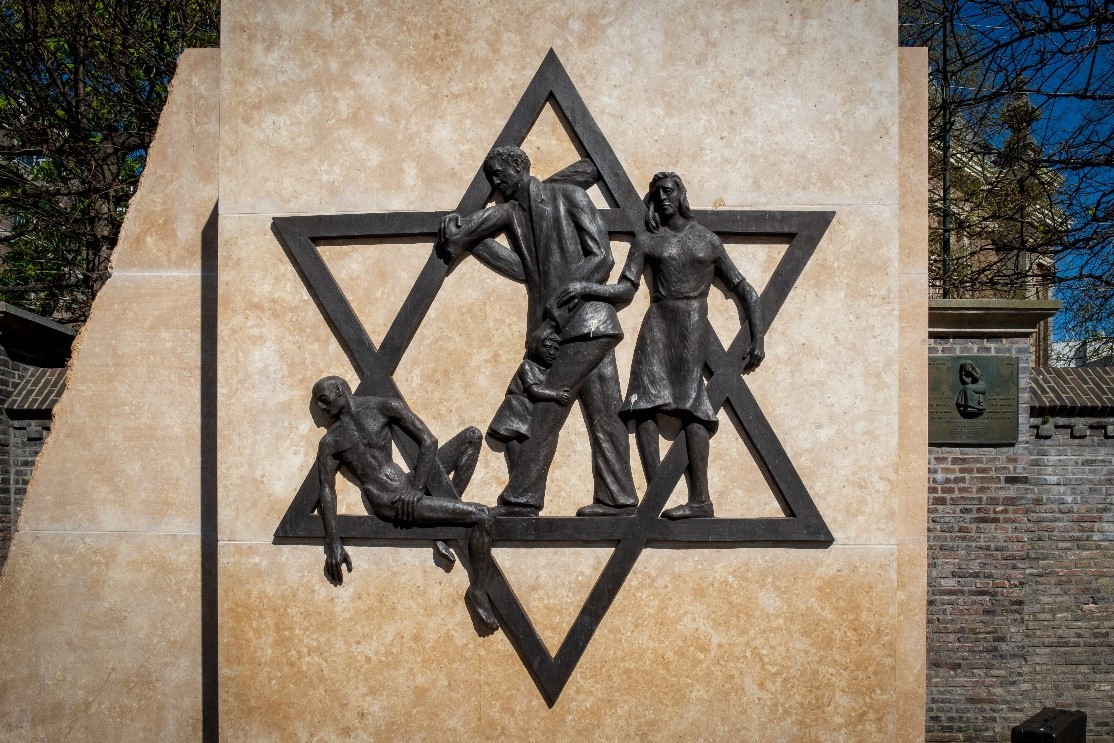Prior to World War Two, The Hague was home to the second-largest Jewish community in the Netherlands after Amsterdam, numbering around 17,000 people in 1940. More than 12,000 Jews from The Hague were murdered in concentration and extermination camps. The Jewish Monument was erected in memory of the city’s Jewish residents who were deported and killed. It stands on Rabbijn Maarsenplein. This square, named after one of the victims, was until 1943 the heart of The Hague's Jewish quarter. The monument shows a door ajar, with two bronze suitcases next to it symbolising the deportation. On the door is an image of the Star of David with four despairing people. There are six seats opposite, a resting point for those who wish to pause for contemplation. The number is a reference to the six million murdered Jews. There is a symbol on either side of each seat, representing the 12 tribes of Israel. This is to remind us that everyone, regardless of their background or position, was eventually pulled into the Nazi killing machine. The Jewish Children's Monument is here too, on the site of the playground of the former Jewish primary school on Bezemstraat. It comprises six staircases or ladders, which also resemble stacks of chairs. Chairs no longer used because the Jewish children are no longer here. The idea behind the design is that you use the stairs or ladder of chairs to climb up to heaven, where the Jewish children are. The chairs bear the names of 400 children who died. The Children's Monument is surrounded by a metal ring with the following text in Dutch and Hebrew: “Gone is the Jewish quarter. Gone are the children. Deported and murdered in World War II. Because they were Jewish. Around 1700 Jewish children from The Hague never returned. Many of them used to play here. Went to school here. Let us not forget and ensure nothing like this ever happens again.”
